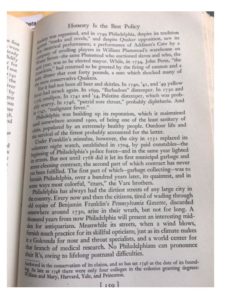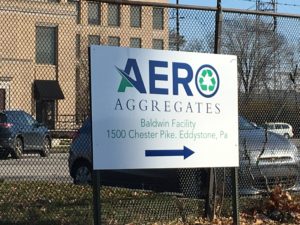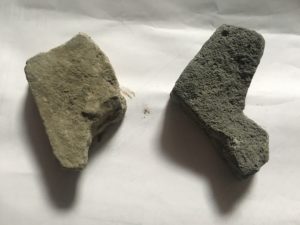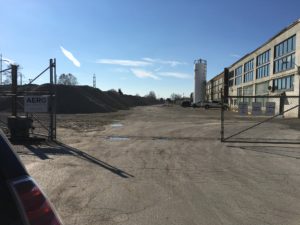 Philadelphia let its first municipal garbage and street cleaning contract in 1768 (1). 249 years later, in 2017, Philadelphia joined other forward-looking cities around the country in setting the aggressive goals of being litter free and sending zero waste to landfills by 2035. To achieve these goals, th
Philadelphia let its first municipal garbage and street cleaning contract in 1768 (1). 249 years later, in 2017, Philadelphia joined other forward-looking cities around the country in setting the aggressive goals of being litter free and sending zero waste to landfills by 2035. To achieve these goals, th e Philadelphia Zero Waste & Litter Cabinet Action Plan, relies heavily on citizens and businesses changing their ways by reducing consumption and increasing waste diversion or recycling.
e Philadelphia Zero Waste & Litter Cabinet Action Plan, relies heavily on citizens and businesses changing their ways by reducing consumption and increasing waste diversion or recycling.
I think that focusing on waste reduction is good but that we are going to need a much more dynamic solution to meet our
goals.
Instead of reinforcing the idea of waste in the public’s mind, let’s transform the narrative from waste disposal to raw materials creation, job growth, and the building of a strong, local, circular economy.
I became a staunch believer in the idea of the circular economy while reading Cradle to Cradle by William McDonough. Now I hear the phrase circular economy being used by different folk in city government like they are trying it out for size – seeing if it feels right. What is needed to make it real for them; to see the potential for reaching zero waste while providing jobs, reducing environmental degradation from raw material extraction, and inspiring industries to grow in the city, is a real-life example – a manufacturing process and a product.
Enter Aero Aggregates.
Aero Aggregates takes glass gathered from recycling bins all over the city, grinds them up into a powder, mixes it with a foaming agent, heats it all up to melt the glass, and ends up with what looks like a cross between pumice and a moon rock. This ‘rock’ has been proved to have similar friction and compaction properties to real rock. Rocks, as you have seen practically everywhere, are used as backfill in road construction and retaining walls and as underlayment for paving. It is heavy. Very, very heavy. The Aero Aggregates ‘rock’ is light, durable and priced to compete.
 I am sitting here looking at two similarly shaped rocks. The rip-rap rock on the left weighs 20.5 ounces. The Aero Aggregates ‘rock’ on the right weighs 2.55 ounces. An 87% weight reduction for the same volume and efficiency!
I am sitting here looking at two similarly shaped rocks. The rip-rap rock on the left weighs 20.5 ounces. The Aero Aggregates ‘rock’ on the right weighs 2.55 ounces. An 87% weight reduction for the same volume and efficiency!
I am not sure if you know but glass has become somewhat of an albatross in the recycling world – a collected resource with little to no demand. Aero Aggregate’s, new to the US, technology has flipped that paradigm on its head consuming nearly all of the recycled glass coming from Philly and its surrounds to meet the demand for manufacturing recycled ‘rock’.
Aero Aggregates is a circular solution to what had been a problem material: the glass was purchased locally,  recycled locally, transformed locally, and is being used locally – right now it is being used on part of the Route 95 reconstruction project and at the Navy Yard. A market has been created for a raw material that was either sold at low value or was being stockpiled and new jobs have been created at the new plant that is located just outside of the city in Eddystone, PA.
recycled locally, transformed locally, and is being used locally – right now it is being used on part of the Route 95 reconstruction project and at the Navy Yard. A market has been created for a raw material that was either sold at low value or was being stockpiled and new jobs have been created at the new plant that is located just outside of the city in Eddystone, PA.
This is a big deal for Philadelphia where over 28% of residential and small business recyclables is glass (over 7% of total waste volume from those sources).
This technology is also a replicable solution that can be implemented in other cities around the country. New York and San Francisco collect similar amounts of glass in their recycling streams and have similar challenges with its disposal. Locating plants near their cities would create markets and jobs.
That is circular. That is economy building. That is market transformation at work.
I wonder what other ‘raw materials’ are being generated that can be transformed locally to feed our local economy?
 When I have asked what Philly is doing to attract other industries to create other circularities I have gotten an offhanded, “The market will take care of that” response. Well, maybe. But I think that sometimes the market needs a little push from say, the Commerce Department reaching out to and attracting transformative companies, or developing public/ private partnerships to develop new facilities, or working with universities to develop new processes and products that would consume and transform the metal/ paper/ cardboard/ plastic/ tires/ batteries/ yard waste and other pieces and parts of the waste stream. To get to Net Zero Waste we need to be collaborative and creative.
When I have asked what Philly is doing to attract other industries to create other circularities I have gotten an offhanded, “The market will take care of that” response. Well, maybe. But I think that sometimes the market needs a little push from say, the Commerce Department reaching out to and attracting transformative companies, or developing public/ private partnerships to develop new facilities, or working with universities to develop new processes and products that would consume and transform the metal/ paper/ cardboard/ plastic/ tires/ batteries/ yard waste and other pieces and parts of the waste stream. To get to Net Zero Waste we need to be collaborative and creative.
Imagine in the future that as you drag your new Made in Philadelphia recycling bin out to the curb, you yell hello to your neighbor who works in the plant that made the bin from the plastic pellets that you made in your West Philly plant. You both turn to wave at the folk in the brand new recycling truck that does a primary sort as it trundles down the road. They in turn wave and yell, “Hey, did you hear about the new plastic solar panel plant they are building in South Philly?” And you think to yourself, ‘wow, energy from plastic soda bottles, who would have thought of that?!’.
Engaging businesses and the general public through imagination and with the idea of opportunity is a huge shift from thinking about the issue as rather than just another way to dispose of trash and will inspire everyone to participate at a whole new level. It may generate solutions that we might never have dreamed possible.
- (Page 159, Philadelphia: Holy Experiment, Struthers Burt, Doubleday, Doran & Company, Inc., 1946)
